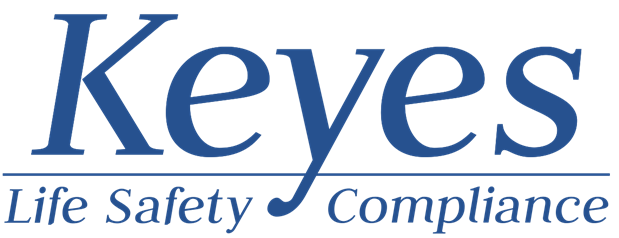
Your resource for expert Life Safety Code® and compliance insights.
Here you’ll find responses to readers' questions, interesting observations from the field, and more.
The world of healthcare compliance is constantly changing. Stay in the loop by subscribing to our free knowledge hub to get updates delivered right to your inbox.
Doors Locked During Fire Alarm?
There is no NFPA code or standard that requires you to lock the door into a room (not in the path of egress) that is on fire.
Generator Battery
The adoption of the 2012 Life Safety Code in 2016 now references NFPA 110-2010, which allows for batteries other than wet-cell type for starting generators.
ATS Testing
Section 8.4.6 of NFPA 110-2010 says transfer switches shall be operated monthly.
Fire Extinguishers in Psychiatric Units
CMS and the AOs are really strict on potentially harmful situations (like ligature points) in behavioral health units.
Business Occupancy Hazardous Area
Section 38.3.2.1 of the 2012 Life Safety Code references section 8.7 regarding hazardous areas, and section 8.7.1.1 says a hazardous area is required to have 1-hour fire-rated barriers or the area be protected with automatic sprinklers.
Door Hold-Open Devices
According to section 19.3.6.3.11 of the 2012 LSC, the corridor door to the patient room does not require a closer.
Storage Room in a Lab
According to section 39.3.2 of the 2012 Life Safety Code, areas used for storage are required to comply with section 8.7.
Change in Occupancy Classification
According to section 43.7.2.3 of the 2012 Life Safety Code, if you are changing the occupancy classification from Ambulatory Healthcare to Healthcare, the area that is being changed must meet the new construction requirements in Chapter 18 for Healthcare Occupancies.
Air Flow Rates
Assuming you are a hospital, the CMS Conditions of Participation (CoP) 482.41(c)(4) says you must have proper ventilation and they recommend you use AORN or CDC, or FGI Guidelines in lieu of any state or local requirements.
Separating an ASC from a Business Occupancy
Patient waiting areas (which includes check-in desks) and recovery areas must be separated between the ASC and business office areas.
Patient Smoking Shelter
All buildings associated with the operation of a healthcare facility are subject to survey and must comply with the respective occupancy chapters of the 2012 Life Safety Code and the 2012 edition of NFPA 99.
Staff Sleeping Rooms
There is a requirement for smoke detection in sleeping rooms for staff. See section 29.3.4.5.1 of the 2012 Life Safety Code.
Looking for something specific?
Search for a keyword, phrase, or topic to narrow in on related results or select from the tag list below.
- Alcohol
- Alcohol Based Hand Rub Dispensers
- Batteries
- Business Occupancies
- Ceilings
- Circuit Breaker
- Clean Supply Room
- Corridors
- Data Closets
- Door Locks
- Doors
- Electrical
- Electrical Receptacle
- Emergency Lights
- Emergency Power
- Environment of Care
- Evacuation
- Eyewash Stations
- Facilities Management
- Fire Alarms
- Fire and Smoke Dampers
- Fire Caulk
- Fire Detection Systems
- Fire Doors
- Fire Drills
- Fire Extinguishers
- Fire Response
- Fire Suppression Systems
- Fire Watch
- Flammable Liquids
- Generators
- Hazardous Areas
- Healthcare Occupancy
- Humidity
- HVAC
- Inspection
- Interim Life Safety Measure (ILSM)
- Joint Commission
- Life Safety Code
- Maintenance
- MRI
- Negative Air
- New Construction
- NFPA 99
- Operating Room
- Oxygen Cylinders
- Patient Rooms
- Power Strips
- Risk Assessment
- Shower Curtains
- Signs
- Smoke Barrier
- Smoke Detectors
- Smoking
- Sprinklers
- Stairwells
- Storage Room
- Temperature
- Testing
- Testing and Inspection
- Vacuum Pump
- Waivers
- Wall Decals
- Waste Containers
- What Happened
